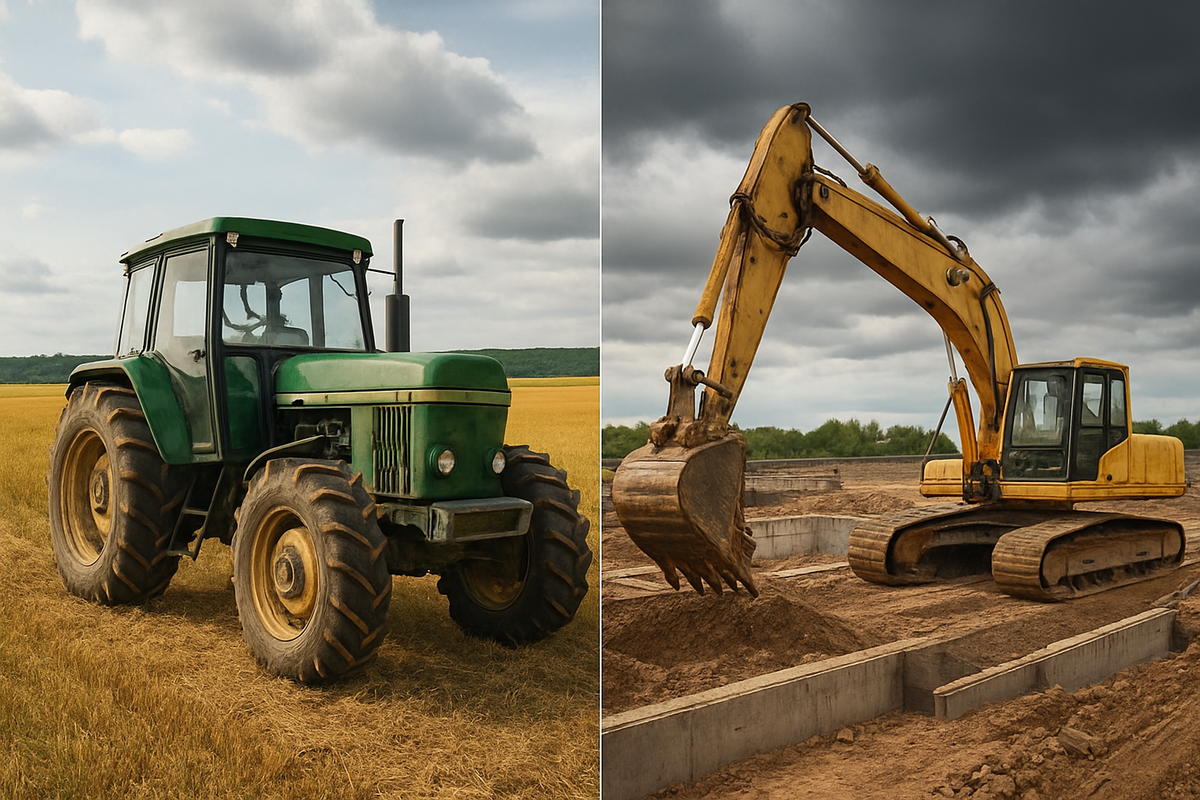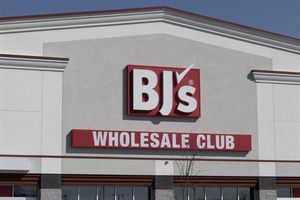
November 24, 2025 – Despite a pervasive downturn in global commodity markets, which are projected to hit their lowest levels in six years by 2026, the used equipment market, particularly within the vital agricultural and construction sectors, is demonstrating remarkable and unexpected stability. This resilience, a stark contrast to the broader economic headwinds, is signaling a significant strategic shift among buyers and a re-evaluation of capital expenditure in these crucial industries.
The current landscape sees global commodity prices in a sustained decline, with energy and agricultural staples like corn, wheat, and soybeans easing due to ample supplies and weak global economic growth. Yet, against this backdrop, the market for pre-owned machinery is not only holding firm but, in some segments, showing signs of recovery and even growth. This divergence points to a complex interplay of factors, including prohibitive new equipment costs, extended manufacturing lead times, and a pragmatic pivot by businesses towards more cost-effective and readily available assets.
A Market's Unexpected Steadfastness Amidst Economic Turbulence
The story of the used equipment market in late 2025 is one of surprising resilience, unfolding against a backdrop of significant shifts in the global economy. While the broader commodity markets have been in a consistent decline, experiencing a projected 7% drop in both 2025 and 2026, the demand and pricing for used agricultural and construction machinery have largely stabilized, and in some areas, even rebounded. This steadfastness follows a period of volatility in 2024, where late-model used agricultural equipment saw price drops of 18% to 25% year-over-year, and construction equipment values also experienced modest declines.
The timeline of this market's unique trajectory shows a "correction" phase in 2024, followed by signs of stabilization and even an uptick in the first half of 2025. By Q3 2025, the used construction equipment market, especially in Europe, was demonstrating clearer signs of recovery with rising demand. In the agricultural sector, while some categories like used row-crop tractors and combines still showed year-over-year price declines in Q3 2025, there was strong demand for four- to seven-year-old machinery, indicating a strategic preference for value. Key players in this scenario include equipment dealers, both independent and OEM-affiliated, who are navigating inventory management and sales strategies, and crucially, farmers and construction contractors who are making cautious yet essential investment decisions. Initial market reactions have seen dealers express optimism for 2025, projecting a rise in used construction equipment sales, while buyers continue to prioritize extending the life of existing fleets and seeking out reliable, older models.
Several factors are converging to create this unusual market dynamic. The persistently high cost of new equipment, exacerbated by inflation and material expenses, coupled with lead times stretching from six to twelve months, is a primary driver pushing buyers towards the more accessible used market. Furthermore, the post-pandemic inventory corrections, which initially led to an oversupply of used machinery in 2023-2024, have largely been absorbed, leading to a more balanced market in 2025. High interest rates, making new equipment financing more expensive, also play a role in nudging buyers towards pre-owned options. This combination has fostered a strategic buying environment where the strong resale value of used equipment, often retaining value better than new machinery, becomes a compelling investment proposition.
Companies Navigating the Shifting Sands: Winners and Losers
The unexpected stability in the used equipment market is creating a distinct set of winners and losers among public companies, particularly those deeply entrenched in the agricultural and construction machinery sectors. This dynamic forces a re-evaluation of business models and investment strategies.
Potential Winners:
Companies with robust used equipment sales divisions or strong aftermarket support for older models are poised to benefit significantly. Deere & Company (NYSE: DE), a global leader in agricultural and construction equipment, stands to gain from increased demand for its pre-owned machinery. While new equipment sales might face headwinds from cautious spending, strong used sales and parts/service revenue for older models could provide a crucial buffer. Similarly, Caterpillar Inc. (NYSE: CAT), a titan in construction and mining equipment, could see its extensive dealer network and certified used equipment programs thrive. Their ability to service and support a larger fleet of older machines will be key. Companies specializing in equipment rental, such as United Rentals, Inc. (NYSE: URI), are also likely to see increased demand as farmers and contractors opt for rentals over outright purchases of new machinery to manage costs and flexibility. Furthermore, technology providers that offer telematics, diagnostics, and predictive maintenance solutions for older equipment could experience a surge in demand, as businesses focus on extending the lifespan of their existing assets.
Potential Losers:
Manufacturers heavily reliant on new equipment sales, particularly those with less developed used equipment programs or aftermarket support, may face challenges. While companies like Deere and Caterpillar have diversified portfolios, smaller or more specialized manufacturers whose primary revenue streams are tied to the sale of brand-new, high-ticket items could experience slower growth or even declines in sales volume. The high interest rate environment and the increased preference for used machinery make it harder to move new inventory, potentially leading to increased inventory carrying costs and pressure on profit margins. Companies that have not adequately invested in their parts and service networks for older models might also find themselves at a disadvantage, as customers prioritize longevity and cost-effective maintenance. The shift towards used equipment also places pressure on innovation cycles, as the demand for the latest, most expensive models might be temporarily subdued.
Wider Significance: A Paradigm Shift in Capital Expenditure
The unexpected stability of used equipment prices amidst a commodity downturn carries wider significance, suggesting a potential paradigm shift in capital expenditure strategies across the agricultural and construction industries. This event is not merely a market anomaly but reflects deeper structural changes and evolving priorities.
This trend fits into broader industry patterns of increasing cost-consciousness and a focus on maximizing asset utilization. In an environment of elevated interest rates and volatile commodity prices, businesses are seeking ways to de-risk their operations. The preference for used equipment aligns with a broader movement towards more sustainable and circular economic practices, where extending the life of machinery reduces environmental impact and resource consumption. The ripple effects are significant: competitors in the new equipment market may be forced to re-evaluate their pricing strategies and lead times, potentially accelerating innovation in manufacturing efficiency or offering more attractive financing options to compete with the robust used market. Partners, such as equipment financing companies and insurance providers, will need to adapt their offerings to cater to a market with a higher proportion of pre-owned assets.
From a regulatory or policy perspective, this trend could spur discussions around equipment lifespan, maintenance standards, and even incentives for adopting used machinery. Historically, periods of economic uncertainty often lead to a flight to value, and the current situation echoes similar trends seen in past downturns where businesses tightened their belts and extended the operational life of their assets. For instance, following the 2008 financial crisis, there was a noticeable increase in demand for used equipment as companies sought to conserve capital. The current scenario, however, is unique due to the confluence of high new equipment costs and extended lead times, which weren't as pronounced in previous cycles. This makes the present stability of used equipment prices a more structural phenomenon rather than just a cyclical one.
What Comes Next: Navigating a New Market Reality
Looking ahead, the used equipment market is poised for a period of dynamic adaptation and strategic realignment, driven by the enduring factors that have underpinned its current stability. Both short-term adjustments and long-term strategic pivots will be essential for all stakeholders.
In the short term, the demand for reliable, mid-age used equipment (4-10 years old) is expected to remain strong, particularly in the agricultural sector where farmers face declining net incomes and rising input costs like the projected 21% surge in fertilizer prices in 2025. This will likely sustain auction values and asking prices for these desirable units. The construction sector, buoyed by ongoing infrastructure spending, will also continue to see robust activity in the used market, especially for compact equipment. Rental markets will remain critical, offering flexibility and capital expenditure avoidance. Companies will need to optimize their inventory management for used machinery, ensuring a steady supply of well-maintained assets to meet demand.
Long-term possibilities include a potential re-calibration of new equipment pricing by manufacturers to better compete with the used market, or a greater emphasis on value-added services and technological differentiation for new models. Strategic pivots may involve manufacturers investing more heavily in certified used programs, remanufacturing initiatives, and expanding their parts and service networks to support an aging equipment fleet. Market opportunities will emerge for businesses specializing in equipment refurbishment, diagnostics, and advanced maintenance technologies. Conversely, challenges will include managing the balance between new and used sales, potential cannibalization of new equipment sales by a strong used market, and ensuring the quality and reliability of older machines. Potential scenarios range from a continued steady growth in the used market, becoming a primary source for capital equipment, to a gradual rebalancing if new equipment costs and lead times eventually normalize. Investors should watch for manufacturers' strategies regarding their used equipment divisions, the performance of rental companies, and the overall health of agricultural and construction capital expenditure trends.
Wrap-Up: Enduring Value in a Volatile World
The unexpected stability of used equipment prices, even as broader commodity markets falter, stands as a critical economic narrative of late 2025. This phenomenon is not merely a fleeting market trend but a profound indicator of shifting capital expenditure strategies and a renewed focus on value and efficiency within the agricultural and construction sectors. The resilience of the pre-owned machinery market underscores the significant impact of high new equipment costs, extended lead times, and a pragmatic approach by businesses to navigate financial pressures.
Moving forward, the market for used equipment is likely to maintain its crucial role, acting as a vital shock absorber against economic volatility. It reflects a fundamental reassessment by farmers and contractors of how they invest in their operational assets, favoring longevity, cost-effectiveness, and immediate availability over the latest models. This enduring demand for pre-owned machinery highlights its inherent value retention and the practical considerations driving purchasing decisions in challenging economic times.
Investors should closely monitor the strategies of major equipment manufacturers, particularly their investments in used equipment programs, aftermarket services, and rental divisions. The performance of companies like Deere & Company (NYSE: DE) and Caterpillar Inc. (NYSE: CAT), alongside rental giants such as United Rentals, Inc. (NYSE: URI), will provide key insights into the market's trajectory. Furthermore, tracking agricultural net income, construction spending on infrastructure projects, and the evolution of interest rates will be crucial in understanding the ongoing dynamics of this uniquely stable market. The takeaway is clear: in a world of economic uncertainty, the tried and true value of used equipment is proving to be a cornerstone of financial prudence and operational continuity.
This content is intended for informational purposes only and is not financial advice






